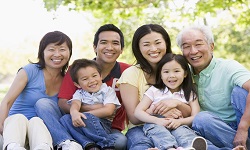Adolescent and Young People's Utilization of HIV/Sexual and Reproductive Health Services: Comparing Health Facilities and Mobile Community Outreach Centers
DOI:
https://doi.org/10.21106/ijtmrph.74Abstract
Background/Objectives: Demand creation for uptake of HIV and sexual reproductive health (HIV/SRH) services among adolescents and young people (AYP) in Nigeria is challenging. This study compares the reach, and utilization patterns, and factors that drive the patterns of utilization of HIV/SRH services by AYP in mobile outreach service centers and health care facilities in Nigeria's capital city.
Methods: Data were obtained from service exit surveys and HIV/SRH service utilization records in selected health facilities and mobile testing outreaches from January to April 2018. The service providers were provided a checklist to capture key information during their interaction with their AYP clients. Data were captured with Microsoft Excel, imported to and analysed with Statistical Package for Social Sciences, version 16.
Results: Community-based mobile outreaches reached a significantly higher proportion of participants, with 88% of them from the community HIV testing points. Among the participants in the SRH service utilization assessment, 20 (15%) and 142 (19%) voluntarily asked for SRH-related information in the health facility and mobile outreach respectively; 53 (40%), and 224 (30%) accepted offer of SRH counselling in the health facility and mobile outreach respectively. There were significant differences in the waiting time for testing and waiting time for result collection at the mobile testing posts and the health facilities.
Conclusion and Implications for Translation: AYP friendly mobile community outreach model shows more promise in terms of reach and also seems to encourage voluntary request for HIV/SRH services among AYP. The costs and waiting times favor the mobile outreach model; however, the quality in terms of personnel and environment was an issue of concern. Hospitals are not providing friendly environments that encourage voluntary uptake of HIV/SRH services by AYPs. A model for AYPs should prioritize community based and friendly services with well-trained personnel in order to build the confidence of AYPs for improved SRH seeking behaviors.
Key words: • HIV • Sexual and reproductive Health • Adolescents and Young People • Preferences • Mobile outreaches services • Health facility testing • Abuja Nigeria
© 2019 Nwakamma et al. This is an open-access article distributed under the terms of the Creative Commons Attribution License, which permits unrestricted use, distribution, and reproduction in any medium, provided the original work is properly cited.affect economic and health promotion.
Downloads
Downloads
##ccdn.publish.history##
How to Cite
Issue
Section
License

This work is licensed under a Creative Commons Attribution 4.0 International License.



















